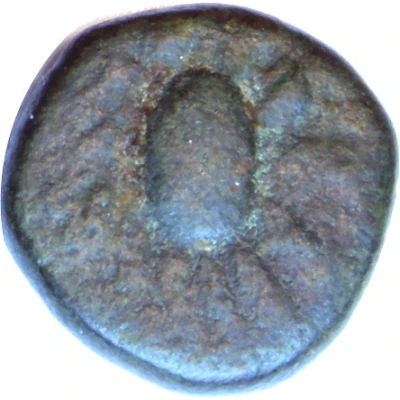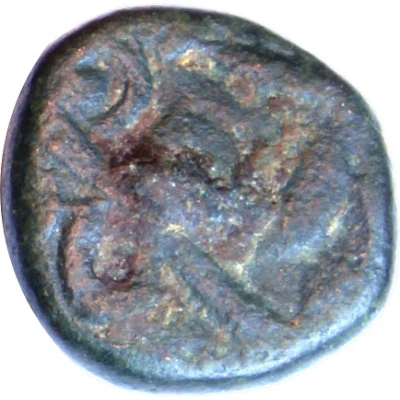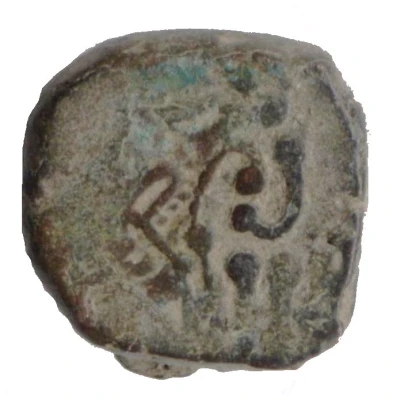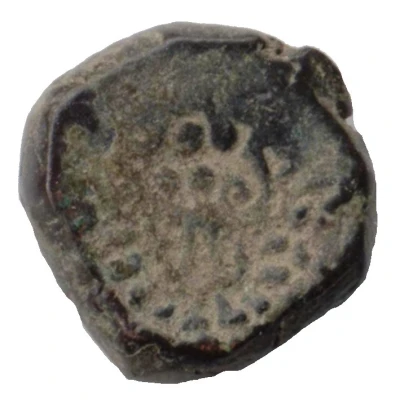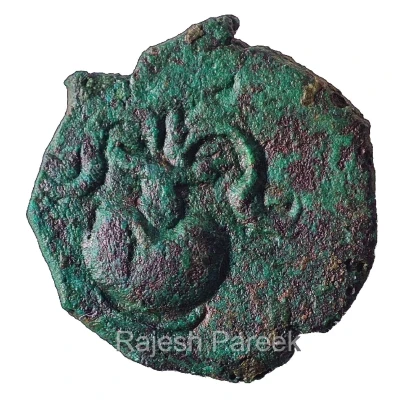
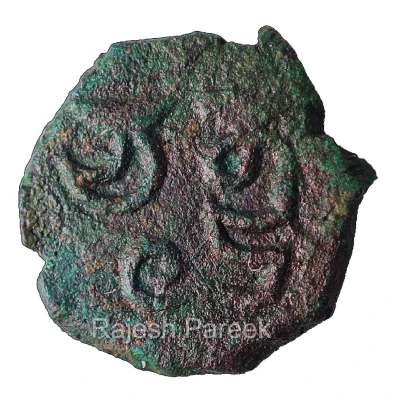

Drachm Fraction - Chandragupta II Vikramaditya Kalash Type
| Copper | 0.75 g | - |
| Issuer | Gupta Empire (India (ancient)) |
|---|---|
| Type | Standard circulation coin |
| Years | 375-415 |
| Value | Fractional Drachm |
| Currency | Drachm (240-550) |
| Composition | Copper |
| Weight | 0.75 g |
| Shape | Round (irregular) |
| Technique | Hammered |
| Orientation | Coin alignment ↑↓ |
| Demonetized | Yes |
| Updated | 2024-10-10 |
| Numista | N#399782 |
|---|---|
| Rarity index | 97% |
Reverse
Reverse has Brahmi script having initials of King's name, Chandra (Gupta)
Script: Brahmi
Edge
Plain
Comment
कलशस्य मुखे विष्णुः, कंठे रुद्रः समाश्रितः|
मूले त्वस्य स्थितो ब्रह्मा, मध्ये मातृगणाः स्मृताः||
The essence of the verse is that Vishnu resides in the opening of the vessel, Rudra (Shiva) in the neck, Brahma in the base, and 'Matrigana' in the middle. In this way, the vessel symbolizes the unity in the diversity of divine powers. It's considered a component of the entire cosmos and is seen as a symbol of nurturing capacity, hence also regarded as a representation of the womb.
Due to this, the vessel symbolizes creation, prosperity, and abundance. That's why during the commencement of any sacred task in Indian culture, the establishment of the vessel or Kalash is performed.
This rare copper coin depicting Kalash Motif was issued by Emperor Chandragupta II 'Vikramaditya' of the Gupta Empire, whose reign spanned approximately from 375 to 415 CE, and is counted among not just the Gupta lineage but also among the greatest rulers of the Indian subcontinent..
Is it merely coincidental that just like the traditional kalash/pot is made of copper,
these coins depicting kalash were also issued only in copper??
The significant point is that during the Gupta era, copper coins were issued in very limited quantity, which makes it a rare coin... Since this very small copper coin is in magnificent grade, which is why it's classified as one of the extremely rare coins...
Interesting fact
One interesting fact about the Drachm Fraction coin is that it features an image of Chandragupta II Vikramaditya, one of the most powerful emperors of the Gupta Empire, who ruled from 375 to 415 CE. He is depicted with a majestic appearance, wearing a crown and holding a flower, symbolizing his connection to the divine. The coin also showcases the advanced craftsmanship of ancient Indian coinage, with intricate details and a high level of precision in its design.
